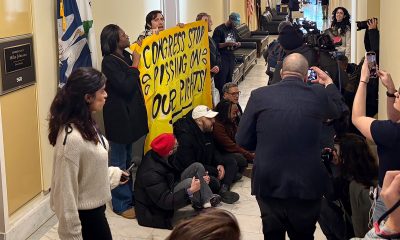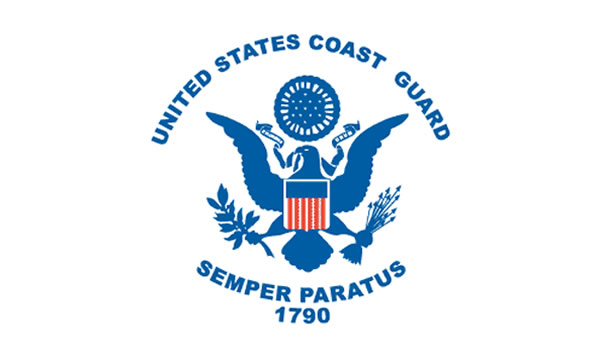District of Columbia
Queer defiance, footlong in hand: the rise of ‘Sandwich Guy’
Air Force veteran protests federal overreach, becomes viral queer community symbol
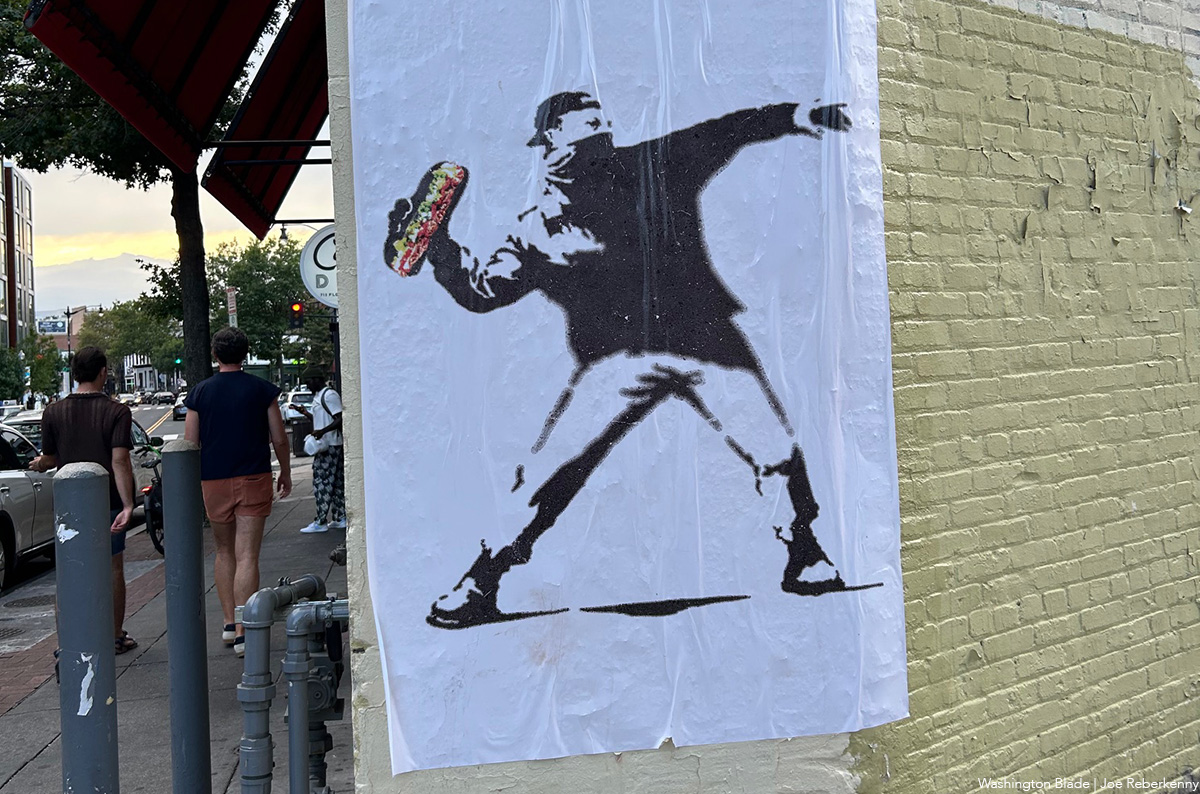
From the “Three Arrows” of the Weimar Republic to the raised fist of Black Power to the keffiyeh as a symbol of Palestinian resistance—whenever there is abuse of power, people find ways to push back.
Now, in 2025 Washington, D.C., an unlikely emblem of protest has emerged: a Subway sandwich hurled at a federal officer.
Sean Dunn, an Air Force veteran and Justice Department employee, was out at the increasingly queer intersection of 14th and U streets on Aug. 10. The summer night was buzzing with nightlife, including Bunker (2001 14th St., N.W.), a popular LGBTQ dance club where a Latin dance party called Tropicoqueta—named after Karol G’s fifth album—was in full swing with DJs and drag queens.
Dunn tried to enter the club but was denied at the door for being too intoxicated, according to a knowledgeable source. Instead, he went into the Subway sandwich shop and lingered outside near the corner, where federal officers were posted.
The scene quickly turned tense. Dunn began asking questions, visibly unsettled by the officers’ presence. Some bystanders told him patrons had been questioned about their immigration status as they left the area. “You almost kind of had a lead up to a potential, like, Stonewall-type situation happening there,” one of Dunn’s close friends told the Blade.
Frustration boiled over. Dunn turned his anger directly on the officers. “Fuck you, fascists!” he shouted. “Shame! Shame! Shame! … I don’t want you in my city!”
Videos from the scene show him crossing the street, chanting as the officers moved away. When one yelled back, the confrontation escalated. Dunn, sandwich in hand, reached a breaking point and launched his footlong, striking a Customs and Border Protection agent in the chest.

A chase followed, ending two blocks later with Dunn in handcuffs. He was initially charged with six felonies. A grand jury later declined to indict Dunn on felony charges.
For friends who know him, the act was shocking in form but not in spirit. Dunn, they said, has long embodied a strong internal sense of justice.
“Sean is somebody I’ve always known to be extremely kind, welcoming, very chill,” said his friend, who requested anonymity because of their job. “He was one of the first people I met in D.C., and he’s always quick to include somebody who just needs a friend. I can’t tell you how many times we’ve been out at JR.’s and suddenly had a new person in the group just because Sean didn’t want them to be alone.”
That same instinct, the friend believes, guided him on U Street. “He saw people coming after queer immigrants in a space that was supposed to be safe, and I think that made him really mad,” he said. “What made him do this was ultimately an attempt to defend people he felt weren’t being defended.”
Dunn’s résumé reflected that ethic of service. A veteran who served honorably in the Air Force, he later worked as an international affairs specialist at the Justice Department. Though not an attorney, he focused on building cooperation with foreign partners—“trying to keep his head down, do his job, and do the good things for the public that he was able to do,” as his friend put it.
Less than 24 hours after the sandwich toss, Dunn was already becoming a local folk hero. At Dupont Circle gay bar JR.’s, patrons recognized him immediately. “Some were like, ‘Sandwich guy!’” his friend said. “I literally took him up to the bar to buy him a drink, and even the bartender recognized him already.”
The image of Dunn wielding his Subway sandwich quickly spread beyond the gayborhood. Memes, protest signs, and even T-shirts circulated online, framing him as a symbol of resistance against federal overreach. Dunn, according to his friend, welcomed the attention. “I think he saw it more as an act of protest,” he said.
Soon, the sight of a pink-clad man clutching a footlong sandwich was everywhere in D.C.—plastered on alley walls in Shaw, waving from flags in Northeast, and printed across protest art. In just hours, Dunn had gone from a Justice Department employee to a celebrated emblem of defiance against the Trump administration’s tightening grip on the District.
The government, however, took a harsher view. Dunn was fired from his DOJ job and, in a dramatic turn, re-arrested days later in a nighttime raid. Video released by the White House showed heavily armed officers entering his apartment with ballistic shields—“like they were going after El Chapo or something,” his friend said.
To those close to him, the spectacle surrounding Dunn’s case felt wildly disproportionate. “Multiple felony charges for throwing a sandwich?” his friend said. “Under any normal administration, he maybe would have spent a night in the drunk tank and done some community service. Not been charged with a felony.”
That overreach, they believe, is what turned a drunken outburst into something larger. What could have been a forgettable scuffle instead became a viral moment of defiance—one that captured the attention of a community already weary of federal policing in the city.
For many, Dunn’s act is less about the sandwich itself than what it represented: frustration, defiance, and solidarity in a moment when queer spaces once again felt under siege.

“I think his sense of justice and inclusiveness and just doing the right thing for people is a huge motivator for him,” his friend said. “For anybody that knows him, that’s what we love and appreciate about Sean.”
Since that night, Dunn has faced consequences—losing his job, enduring arrests—but also recognition, becoming a symbol of resistance in D.C.’s protest culture. The sandwich toss, caught on camera and spread across the internet, has already secured its place in the city’s long tradition of confrontation and dissent.
District of Columbia
New LGBTQ bar Rush set to debut
14th & U picks up a queer lounge, dance spot with a tech focus
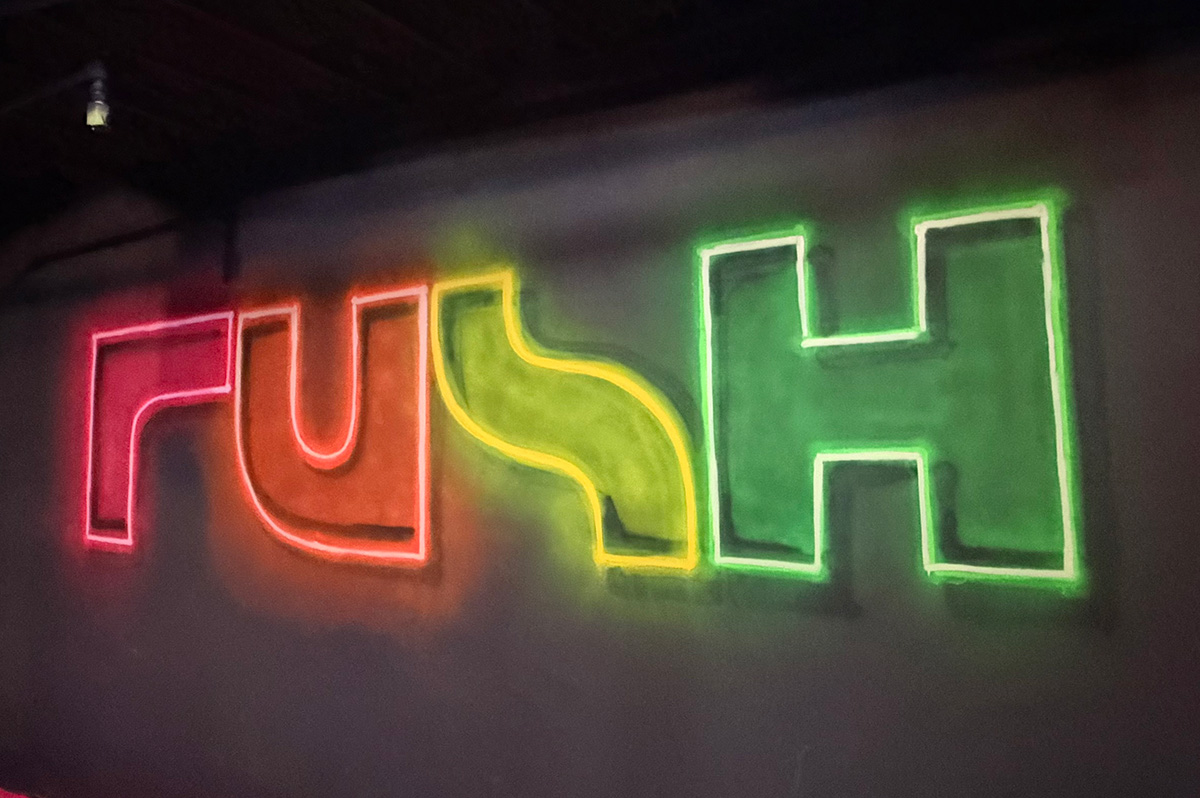
(UPDATE: Rush owners told the Blade they have postponed the opening of the new bar to Nov. 28.)
The LGBTQ nightlife hotbed at 14th and U is about to get another member. Rush, a bar years in the making, is set to open its doors next week.
Filling the hole left by Lost Society, Rush will be a tech-forward, two-story bar featuring fully integrated light and sound to deliver “an immersive experience,” according to owner Jackson Mosley.
Mosley began conceptualizing such a bar back in 2017. His career linking tech and hospitality stretches even further back, beginning his career at LivingSocial and Uber. And even before that, he moonlighted at Town during his college years, where he developed a passion for drag and LGBTQ nightlife.
Rush is this manifestation of both tech and nightlife coming to fruition, but it hasn’t been without setbacks. Mosley originally planned to open farther east, on 9th and U streets, but received pushback from the building in which it was supposed to be housed. “It was the universe telling me it wasn’t the right spot,” he says. Earlier this year, coming across the Lost Society vacancy, Mosley finally found his host. As the center of LGBTQ nightlife has shifted to 14th Street – as reinforced by this week’s Shakers shuttering – Mosley was eager to join the festive fray.
Rush is in the same building as Bunker, settling on the top two levels of the structure. Across a flexible, indoor-outdoor combination and 6.000 square feet, Rush entirely shakes up its two floors – “a real reimagining so that it feels entirely new,” he says, with new equipment and a new vision and a capacity of at least 300.
The lower floor leans into a lounge vibe. Relaxed seating and a huge bar dominate the area. It will feature a sound booth, furniture with built-in lighting, and plenty of places to chat.
Upstairs is the club, dance-forward space. It has a “proper drag stage,” Mosley says, one of the largest among fellow LGBTQ bars, at 7.5 feet deep by 22 feet wide. Set up for live performances and painted in matte black, this rooftop level can open the doors to the deck allowing the entire level to participate in performances.
Rush will also boast a full kitchen, distinct from many other LGBTQ bars. Set to start serving in a couple of months, it will serve a large menu of bar food and more, as well as a lively brunch on the rooftop.
“It’s long overdue to have a brunch with good food at a bar,” he says.
Mosley emphasizes sound and lighting as part of his tech focus. Dropping more than $150,000 on this multi-sensory experience, he realized his “life dream to build out a sound system I love,” he says. “Enough lighting to power Echostage,” he joked. Lasers, hazers, smoke machines, and CO2 cannons are just a few elements. “One piece lacking at a drag show has been integrated light and sound with the performers’ choreo,” he says, like when a queen performs a death drop, there should be a light and sound crescendo.
Rush also differentiates itself with its unique business model. All Rush employees are full-time exempt with benefits like healthcare and PTO. Mosley takes up the CEO position of his firm Momentux, which will operate Rush. Mosley envisions growth to open Rush locations in other cities along the same model. Patrons will swipe their credit cards at the door, reducing the number of swipes for bar staff (and reducing credit card fees), and wear wristbands to track purchases. The approach negates the need – and request – for tips. Service charges will only be levied when patrons don’t close their tabs. “I’m rethinking the role of staff, down to the barback,” he says.
As for what the staff will pour, Rush will slowly roll out an eclectic, cheeky signature cocktail list to be served beyond the usual vodka-sodas. Such drinks might include the “14th & Unhinged,” with tequila, mezcal, tamarind, and lime; the “Power Vers,” with gin, elderflower, lemon, and pink peppercorn foam; and the “Flight Attendant,” which comes with a spread based on the ever-popular in-flight cookie, Biscoff.
The bar’s opening is set for Friday, Nov. 28, with a promising lineup — popular DJ Sidekick, and a trio of local drag favorites: Cake Pop, Druex Sidora, and Mari Con Carne. A social media post promised “good energy, controlled chaos, and hot strangers.”
Rush, says Mosley, might be like “if Taylor Swift and Lady Gaga had a baby, plus drag queens,” he says.
District of Columbia
D.C. LGBTQ bars ‘hanging in there’ amid tough economy
Shakers to close; others struggling in wake of gov’t shutdown, rising prices
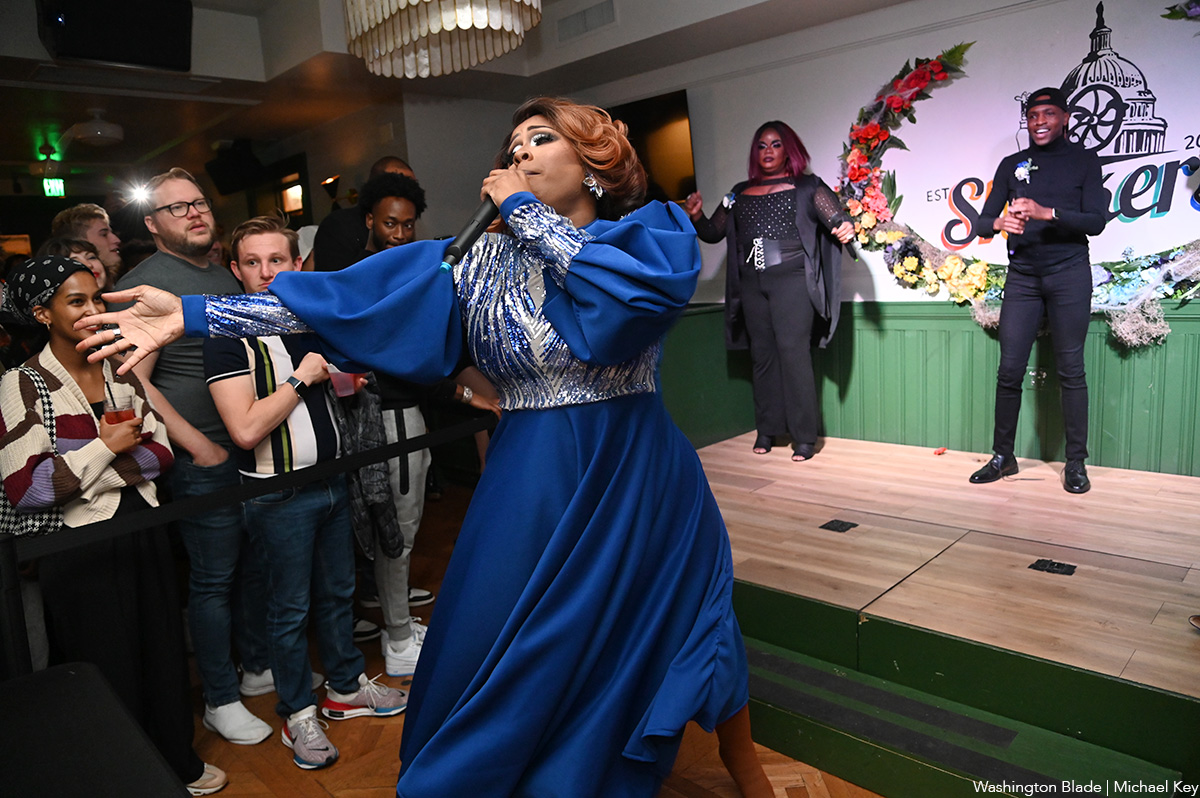
The owners of several of D.C.’s at least 24 LGBTQ bars, some of which also operate as restaurants or cafes, say they are being negatively impacted by the same forces impacting most other D.C. bars and restaurants at this time.
Among the lead issues impacting them have been the deployment by President Donald Trump of National Guard troops on city streets, the nearly two-month long federal government shutdown that just ended, and skyrocketing prices for food and other supplies brought about by the Trump administration’s controversial tariff program.
The Trump administration’s decision to lay off thousands of federal workers shortly after Trump took office in January also appears to have resulted in a decline in the number of people going out to restaurants and bars, including LGBTQ restaurants and bars, according to some of the owners who spoke to the Washington Blade.
Observers of LGBTQ nightlife businesses have pointed out that although nationwide the number of LGBTQ or “gay bars” has declined significantly since 1980, the number of LGBTQ bars in D.C. has increased from just six in 1980 to at least 24 so far in 2025.
If the popular Annie’s Paramount Steak House near Dupont Circle, Mr. Henry’s restaurant, bar and Jazz music performance site on Capitol Hill, and the Red Bear Brewing Company bar, restaurant and music performance site in Northeast near Capitol Hill – each of which have a mixed but large LGBTQ clientele — are included in the D.C. gay bar list, the total number climbs to 27.
As if that were not enough, yet another D.C. gay bar, Rush, was scheduled to open on Nov. 21 at 2001 14th Street, N.W. at the intersection of 14th and U streets, near the location of 10 other LGBTQ bars in the U Street nightlife corridor. That will bring the number of LGBTQ-identified bars to 28.
Among the first of the LGBTQ bar owners to publicly disclose the economic hardships impacting their establishment was David Perruzza, who owns the gay bar and café Pitchers and its adjoining lesbian bar A League of Her Own in the city’s Adams Morgan neighborhood.
In an Oct. 10 Facebook post, Perruzza said he was facing “probably the worst economy I have seen in a while and everyone in D.C. is dealing with the Trump drama.”
He added, “I have 47 people I am responsible for, and I don’t know how to survive in this climate. If I have ever sponsored you or your organization, now is the time to show the love. Not only for me but other bars. I went out tonight and it was depressing. If you want queer bars, we all need your help.”
Asked on Nov. 10 how things were going one month after he posted his Facebook message, Perruzza told the Blade business was still bad.
“I’m not going to sugarcoat it,” he said. “Again, we’re busy. The bar’s busy, but people aren’t buying drinks.” He added, “No, they’re coming in and drinking water and dancing. They’re not buying drinks.”
Like most of the city’s bars, including LGBTQ bars, Perruzza said he provides water jugs and plastic cups for patrons to access drinking water by themselves as needed or desired.
Jo McDaniel, co-owner of As You Are, an LGBTQ bar and café in the Barracks Row section of Capitol Hill at 500 8th Street, S.E., which has a large lesbian clientele, said she, too, was hit hard by the National Guard deployment. She said National Guard troops carrying guns began walking up and down 8th Street in front of As You Are around the last week in August and have continued to do so.
“And then from the 7th [of September] they went from pistols to rifles,” McDaniel said. “Nothing has happened. They’ve just been walking back and forth. But now they have big guns. It’s pretty terrifying.”
She noted that the National Guard presence and the other issues, including the federal shutdown, caused a sharp drop in business that prompted her and her partner to launch a GoFundMe appeal in August, a link to which was still on the As You Are website as of Nov. 16.
“We’re reaching out to you, our community, our allies, and those who believe in safe spaces for marginalized folks to help us get past this challenge so we can all ensure AYA’s survival and continued impact in D.C. and the community at large,” a message on the GoFundMe site says.
Freddie Lutz, owner of Freddie’s Beach Bar, the LGBTQ bar and restaurant in the Crystal City section of Arlington, Va., just outside D.C., said the federal shutdown, rising costs, and even the deployment of National Guard troops in D.C. appears to have had a negative impact on businesses across the river from D.C., including Freddie’s.
“Freddie’s is doing OK but not as good,” he said. “We’re down a little bit. Let’s put it that way,” he added. “I just feel like with all the chaos going in this administration and everything that’s happening it’s like we just have to hang in there and everything will be alright eventually,” he told the Blade.
“But business is down a little bit, and we can use the support of the community just like David Perruzza has been saying,” Lutz said. He said the drop in businesses for at least some of the LGBTQ bars may also be caused by the large and growing number of LGBTQ bars in D.C.
“There are a lot of new gay bars, which are also impacting the rest of us,” he said. “I’m all for it. I want to support them. But it is taking away from some of us, I think.”
Mickey Neighbors is the owner of Sinners and Saints, an LGBTQ bar at 2309 18th Street, N.W. in Adams Morgan located a few doors away from Pitchers and A League of Her Own. He said his business has mostly rebounded from a slowdown caused by the National Guard deployment.
“At first, everyone was kind of scared,” he said. “But then it kind of blew over and there really aren’t that many other bars where the demographic people that come to mine really go to.” He described Sinners and Saints as catering to a younger “BIPOC” crowd, a term that refers to Black, Indigenous, and People of Color.
“We had a downturn of business for a few weeks, but everything is back to normal,” he said.
Stephen Rutgers, co-owner of the LGBTQ bar Crush located at 2007 14th Street, N.W., a few doors down from where the new bar Rush is about to open, said Crush like most other bars was impacted by the National Guard deployment.
“Some bars are going to be fine,” he said. “We are trying to do some creative things to keep people coming in. But overall, everyone is seeing cutbacks, and I don’t think anyone is not seeing that,” he said.
Rutgers said Crush, which in recent weeks has had large crowds on weekends, said he was hopeful that his and other LGBTQ bars would fully rebound when the federal shutdown ends, which occurred the second week in November.
Among other things, Rutgers said a decline in the number of tourists coming to D.C. in response to the Trump administration’s policies has impacted all bars and restaurants, including LGBTQ bars. He said this, combined with the record number of LGBTQ bars now operating in D.C., is likely to result in fewer patrons going to at least some of them.
One of the D.C. LGBTQ bars that put in place a significant change in the way it operates in response to the developments impacting all bars is Spark Social House, a bar and café located on 14th Street, N.W. next door to Crush. In the past week, Spark Social House announced it was ending its status as the city’s only LGBTQ bar that did not serve alcoholic beverages and instead sold a wide range of alcohol-free cocktails.
Owner Nick Tsusaju told the Blade he and his associates made the difficult assessment that under the current economic environment in D.C., which is impacting all bars and restaurants, Spark Social would need to offer both alcohol and non-alcoholic beverages
“You can imagine that if the bars that are selling alcohol are struggling, we are struggling just like other small businesses with the same issues,” he said. “And I think that introducing alcohol is not really an abdication of our values.”
He noted that beginning in December, after Spark Social obtains its liquor license, “we’re introducing a one for one menu where every cocktail comes in two options, booze and boozeless.”
Ed Bailey, co-owner of the D.C. gay bars Trade and Number Nine located near the intersection of 14th and P Streets, N.W., told the Blade in September his two establishments were “ramping up for a busy fall after an unusual summer” impacted by the National Guard deployment.
His predictions of a busy fall appear to have come about at least on weekend nights, including Halloween night, where there were long lines of Trade’s mostly gay male clientele waiting to get into the bar.
Stephen Thompson, a bartender at the Fireplace, a longtime gay bar located at 2161 P Street, N.W., near Dupont Circle, said the National Guard presence and other issues impacting other bars have not negatively impacted the Fireplace.
“We are doing fine,” he said. “The National Guard has not hurt our business. The soldiers do walk by a few times a week, but we’ve been looking pretty good the last couple of months.”
One of the at least 10 LGBTQ bars in the U Street, N.W., entertainment corridor, Shakers, at 2014 9th Street, N.W., announced in a statement this week that it will close its doors on Nov. 23.
“After many, many difficult discussions, we ultimately decided it is time for Shakers to close its doors,” says the statement posted by Shakers owners Justin Parker and Daniel Honeycutt. “While we are in so many ways saddened, we are also looking forward to spending a bit more time with our three-year old son,” the statement says.
It also announces that the nearby gay bar Kiki, located around the corner on U Street, will acquire use of the Shakers building and “keep the space dedicated to our LGBTQ+ community.”
In his own statement on social media, Kiki owner Keaton Fedak said, “To now have two LGBTQ+ bars at 9th & U under the Kiki umbrella is a true full-circle moment – rooted in friendship, history, and the community that continues to grow here.”
The owners of several other D.C. LGBTQ bars couldn’t immediately be reached for comment or declined to comment for this story.
Edward Grandis, a D.C. attorney who has worked with some of the D.C. LGBTQ bars, said the COVID pandemic, which led to the temporary shutdown of all bars and restaurants, appears to have had a lasting impact on LGBTQ bars long after the pandemic subsided.
Among other things, Grandis said he has observed that happy hour sessions at most bars, including LGBTQ bars, have not returned to the level of patronage seen prior to the COVID pandemic. He notes that happy hour times, usually in late afternoon or early evening during weekdays, where bars offer reduced price drinks and some offer free drinks to attract large numbers of patrons, have not been drawing the crowds they did in past years.
“The COVID shutdown assisted the online social meeting sites,” Grandis said. “Bars were closed so guys turned to the internet for setting up parties and this has continued even though there are more bars,” he said in referring to the D.C. gay bars. According to Grandis, the gay men in the age range of their 20s and 30s appear to be the largest group that is no longer going to gay bars in large numbers compared to older generations.
“So, I think the trend started before what the feds are doing,” he said in referring to the National Guard presence and the federal shutdown. “And I think what we are witnessing right now is just sort of like another obstacle that people in the gay and entertainment community need to figure out how to attract the 20-year-olds and young 30s back to the bars.”
District of Columbia
High cost of living shuts essential workers out, threatens D.C.’s economic stability
City residents don’t always reflect those who keep it running
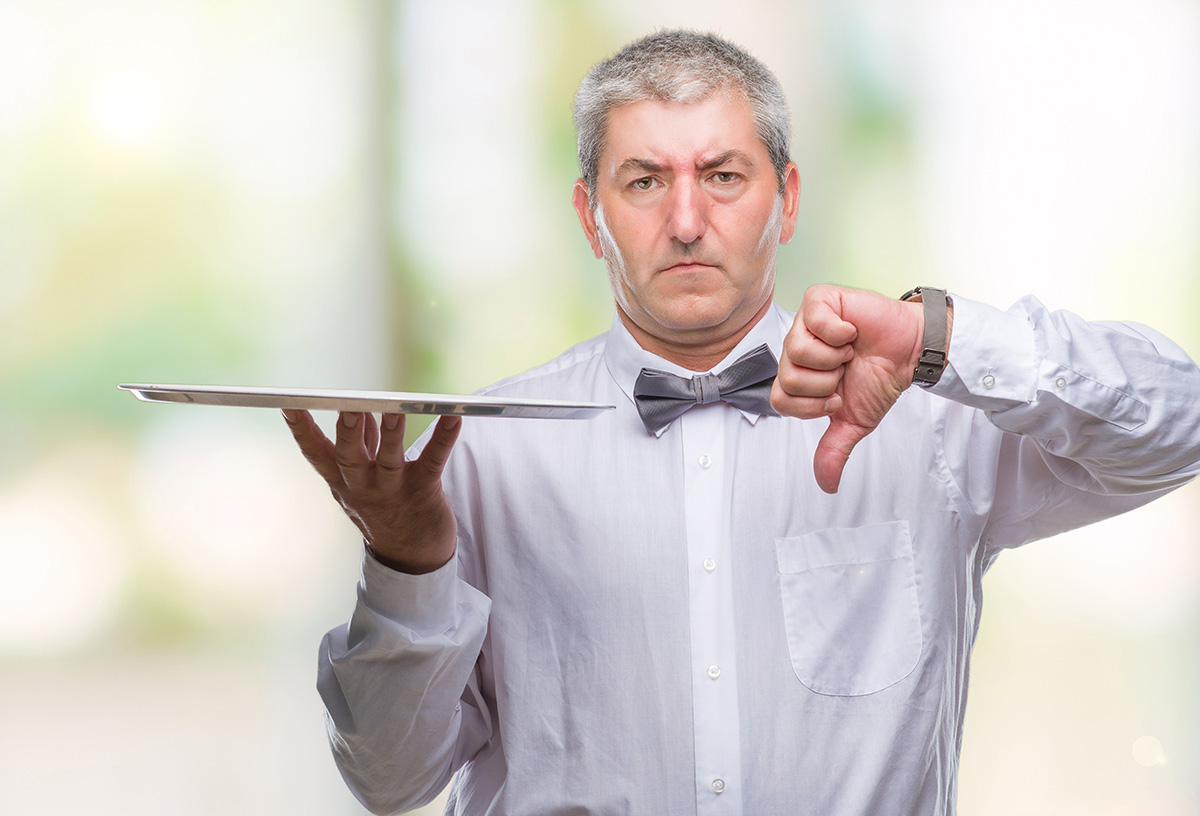
When Nic Kelly finishes her 6 a.m. shift as a manager at PetSmart, she walks to her bartending job at Alamo Drafthouse in Crystal City to serve cocktails, beers, and milkshakes for hundreds of guests.
Kelly, 26, doesn’t work a combined 60-65 hours per week to pocket extra cash –– she does it to barely make her almost $1,700 rent each month.
“I’m constantly working, and some days I work two jobs in the same day,” Kelly said. “But twice now I’ve had to borrow money from my mother just to make sure I pay my full rent.”
Yesim Sayin, D.C. Policy Center executive director, said this is unfortunately how the D.C. area is structured –– to keep essential workers, service employees, and lower-income people out and those with greater economic mobility in.
The DMV area’s high cost of living makes it near-impossible for employees who keep the area running to make a living, Sayin said. In 2022, only 36% of D.C.’s essential workers lived in the city, according to a D.C. Policy Center report. D.C. is also ranked 13th in the world for highest cost of living as of Nov. 7.
But for Sayin, there’s more work for policymakers to get done than simply acknowledging the high cost of living. Take a look at how current policies are impacting residents, and what long-term solutions could help the DMV thrive.
Feeling the high cost of living
D.C. has the highest unemployment rate in the country at 6.0% as of August. Sayin said the city’s high unemployment rate reflects a lack of geographic mobility in its population, meaning those who can’t find jobs can’t afford to look outside of the DMV area.
Though there are job training groups working to close the unemployment gap, securing a job –– let alone two –– rarely guarantees a comfortable lifestyle for essential and service employees.
A single-person household in D.C. with no children must make at least $25.98 an hour to support themselves, according to the Living Wage Calculator. That number jumps to $51.68 an hour for a single adult with one child. Minimum wage in D.C. is $17.95 an hour and $10 an hour for tipped employees.
Whether it’s utilizing free meals at the Alamo to save on groceries or borrowing money to make rent, every week could bring a different sacrifice for Kelly.
While Kelly lives and works a few minutes south of D.C., Sayin said the connectedness of the DMV means you don’t have to travel far to feel the withering effects of the area’s high cost of living.
“People don’t really care what flag adorns their skies,” Sayin said. “They’re looking for good housing, good schools, cheaper cost of living, and ease of transportation.”
For those that stay in the DMV area, those conditions are hard to come by. This can lead to people working multiple jobs or turning to gigs, such as Uber driving or selling on Etsy, to fill income gaps. Sayin said there are short-term benefits to securing these gigs alongside a primary job, such as helping people weather economic storms, avoid going on government assistance or racking up debt.
But she said the long-term implications of relying on gigs or other jobs can harm someone’s professional aspirations.
“You can spend three extra hours on your own profession every work week, or you can spend three hours driving Uber. One gives you cash, but the other gives you perhaps a different path in your professional life,” Sayin said. “And then 20 years from now, you could be making much more with those additional investments in yourself professionally.”
There’s a strong demand for work in D.C., but when the city starts suffering economically, those who live outside the area –– usually essential or remote workers –– will likely find work elsewhere. Sayin said this negatively impacts those employees’ quality of life, giving them less professional tenure and stability.
D.C.’s cost of living also centralizes power in the city, according to Sayin. When lower-wage employees are priced out, the residents who make up the city don’t always reflect the ones who keep it running.
“Ask your Amazon, Uber or FedEx driver where they live. They’re somewhere in Waldorf. They’re not here,” Sayin said.
Working toward an accessible D.C.
Build more. That’s what Sayin said when thinking of ways to solve D.C.’s affordability crisis.
But it’s not just about building more –– it’s about building smartly and utilizing the space of the city more strategically, Sayin said.
While D.C. has constructed lots of new housing over the years, Sayin noted that they were mostly built in a handful of neighborhoods tailored to middle and upper-class people such as The Wharf. Similarly, building trendy small units to house young professionals moving to the city take up prime real estate from struggling families that have much less geographic mobility, she said.
“The affordability problem is that today’s stock is yesterday’s construction,” Sayin said.
Solving these issues includes ushering in a modern perspective on outdated policies. Sayin cited a D.C. policy that places restrictions on childcare centers built on second floors. Since D.C. parents pay the highest rates in the country for childcare at $47,174 annually, she said loosening unnecessary restrictions could help fuel supply and lower costs for families.
Sayin said policymakers need to consider the economic challenges facing residents today, and whether the incentives and tradeoffs of living in D.C. are valuable enough to keep them in the city.
For Kelly, the incentives and tradeoffs of staying in the DMV area aren’t enough. She’s considered moving back in with her mom a few times given how much she has to work just to get by.
Aside from wanting higher compensation for the work she does –– she noted that businesses can’t operate without employees like her –– Kelly also questioned the value of the tradeoff of moving so close to the city.
“There’s no reason why I’m paying $1,700 for a little studio,” Kelly said. “You also have to pay for parking, utilities aren’t included and a lot of residents have to pay for amenities. We are just giving these property management companies so much money, and we’re not really seeing a whole lot of benefit from it.”
Sayin said placing value on the working people of the city will inject fresh life into D.C.’s economy. Without a valuable tradeoff for living in or around the city, there’s little keeping essential and service employees from staying and doing work taken for granted by policymakers.
-

 District of Columbia4 days ago
District of Columbia4 days agoD.C. LGBTQ bars ‘hanging in there’ amid tough economy
-

 District of Columbia3 days ago
District of Columbia3 days agoNew LGBTQ bar Rush set to debut
-

 National4 days ago
National4 days ago213 House members ask Speaker Johnson to condemn anti-trans rhetoric
-

 Virginia4 days ago
Virginia4 days agoRepealing marriage amendment among Va. House Democrats’ 2026 legislative priorities



